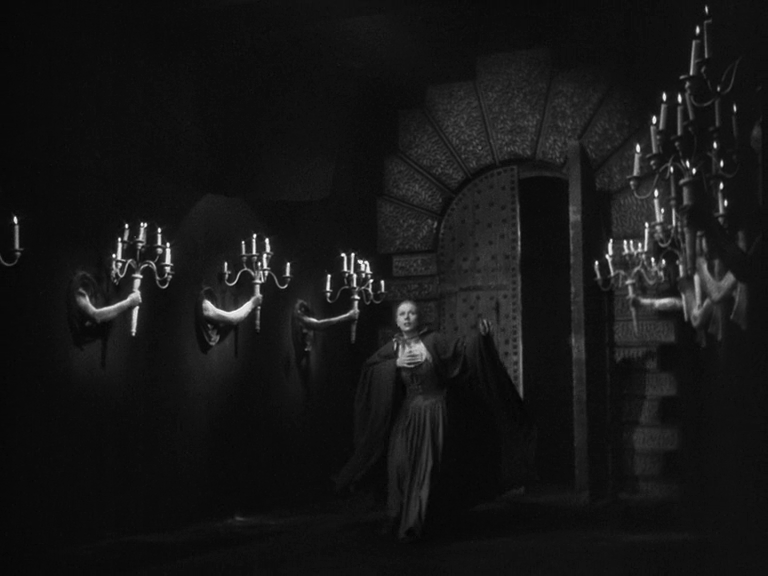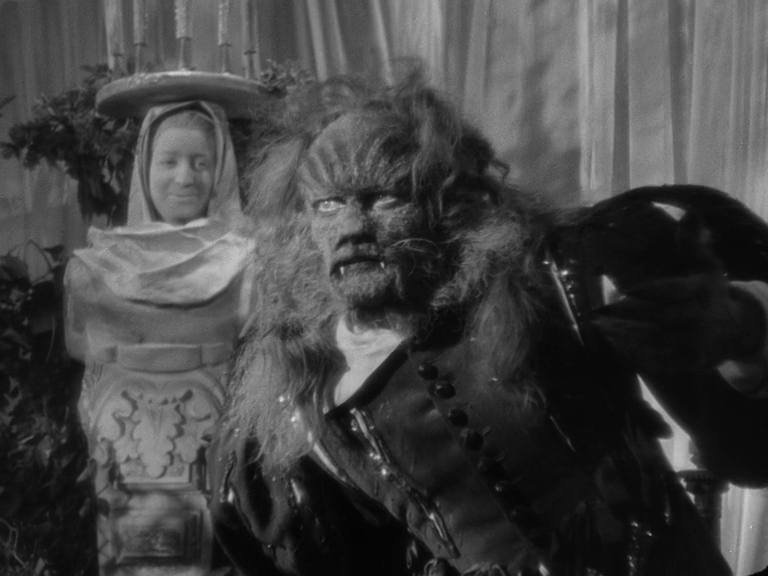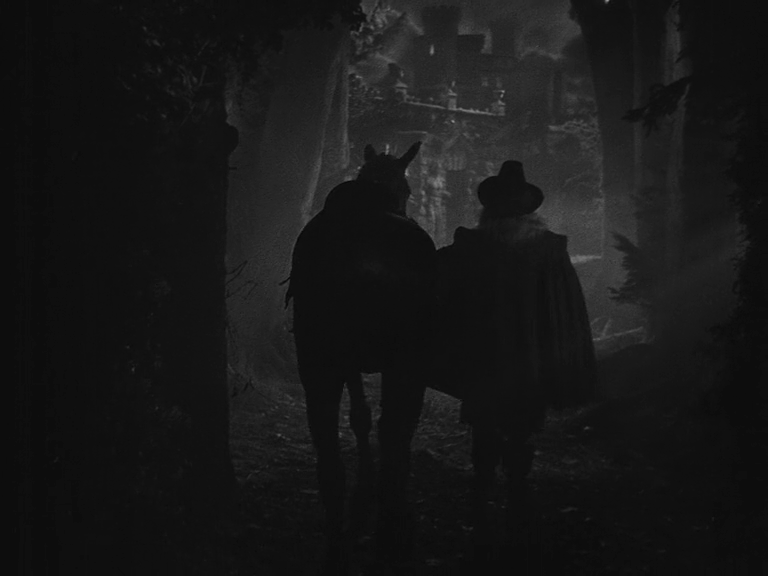Beauty and the Beast (1946)
“I disgust you. You find me repulsive.”
|
Synopsis: |
|
Genres, Themes, Actors, and Directors:
Response to Peary’s Review: Peary elaborates on this and other aspects of the film in his Cult Movies book, where he writes that “first time viewers are invariably impressed and surprised that such an unusual film exists; that Cocteau dared to make a fairy tale without drastically changing the content of the original story; that he dared make a film with ‘art’ and not box office success as the ultimate goal; and that he dared approach his film as a poet rather than as a typical movie director.” All of this rings true: it remains a genuine pleasure to revisit this film, despite its shortfalls — which include (for me) a storyline that seems to lag at times, perhaps due to Cocteau’s emphasis on lingering for atmospheric effects. On that note, Peary points out that cinematographer Henri Alekan’s “camera rarely moves, yet within his fixed frame comes a mesmerizing panorama of movements…, shadows, darkness, the clear white sky, and characters who, set against that sky, are filmed as if they were moving statues.” Regarding Peary’s frustration with the Beast’s transformation into “a human being who looks like Avenant with a permanent”, I can’t say I share it. Peary’s assertion that “Beauty suddenly becomes flirtatious, as if all along she had only pretended to be an innocent” is an unfair assessment of her piqued romantic interest; why does Peary begrudge her happiness at seeing a beloved companion transformed into a human who she can more easily envision as a viable life partner? Meanwhile, Peary’s fixation on the prince’s “effeminate” nature and hair perm are uncharitable at best (his hairdo is certainly no better or worse than that of Avenant). Peary’s ending statement in his Cult Movies review — “We aren’t pleased by any means. This transformation, the worst scene in the picture, almost ruins what went before it: a true king has been demoted to a prissy prince.” — is simply not true. For shame, Peary! (especially given that Marais was Cocteau’s real-life lover). Allow this fairy tale to end the way one might imagine it to in its original form, as intended by Cocteau. Redeeming Qualities and Moments:
Must See? Categories
(Listed in 1001 Movies You Must See Before You Die) Links: |






2 thoughts on “Beauty and the Beast (1946)”
In total agreement with yourself; a stone cold classic that ends just right … it’s a fairy tale for heavens sake.
This is THE version of the tale on film; the bombastic, all too American 1991 can go spit. Overrated.
A true classic for the ages – one that remains potent and visually striking (at times, rather spellbinding) and satisfying. Yes, a must-see (and one that holds up well on repeat viewings).
I can’t say I was ever big on the ‘Cocteau mystique’ – and even now know less about the man and his work than maybe I should – but I’ve retained a fondness for this wonderfully realized film. Seeing it again has reminded me of (as stated) its simplicity and its rich value as a fairy tale.
Simply put – it works, from beginning to end.
I also don’t agree with Peary’s odd remarks about Marais; his tone in all three roles appears appropriate. In fact, the contributions by the entire cast seem only to augment the spirit of Cocteau’s overall vision of the piece.
Of course, a great deal of credit must go to Christian Bérard for his exquisitely detailed sets and the splendid imagery fashioned by DP Henri Alekan. (This was an early film in Alekan’s career; he would go on to a list of almost 100 credits – with one of his final films exhibiting him at his best: Wenders’ ‘Wings of Desire’.)